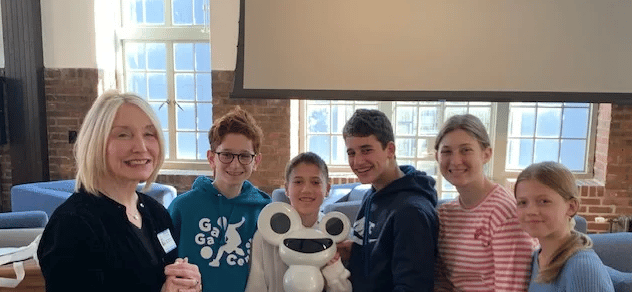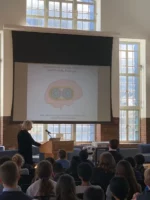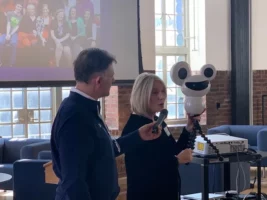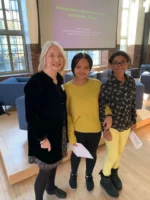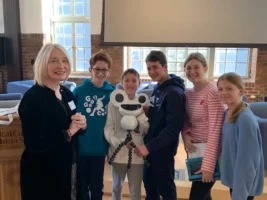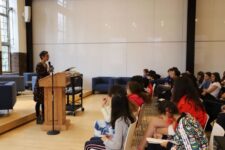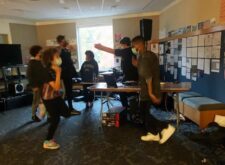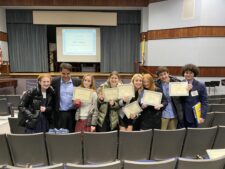On Friday, January 24, Dr. April Benasich, a neurologist from Rutgers University, spoke to the 7th Grade. Dr. Benasich oversees an infancy lab where her team studies the development of brains, specifically developmental issues starting in utero.
Most recently, Dr. Benasich’s team has focused on brain development and language acquisition in children two to three months of age. When babies are very young and they start to hear sounds, they develop sound maps. A sound map is how babies tell the difference between sounds such as “ga” and “da.” The babies need to hear this difference very quickly, in a matter of milliseconds. If they don’t, it could lead to learning disabilities.
Dr. Benasich performed a study to see how babies develop these maps. She had three groups: the active group, the passive group, and the control group. In the active group, a sound played and the babies were trained to respond when it changed. As the babies did better, the sounds got harder. In the passive group, sounds played as the babies appeared, and they were either easy or hard in no specific order. In the control group, no sound played. She tracked the babies’ sound map development using an electroencephalogram, a way of monitoring brain activity. She found that the babies in the active group had more developed sound maps compared to the babies in the passive and control groups. Using this information from her study, she decided to build a robot that could help babies develop better sound maps.
Dr. Benasich’s lab developed a robot named AABy. The robot is designed to help improve children’s sound mapping skills starting from the time they are six months old. In order for kids to stay interested, AABy looks like a toy and resembles a face shape. There are two screens found inside AABy’s “eyes” and also an eye tracker located inside its “mouth,” which provides a wide enough range to follow the baby’s glance. Because there are two screens, the eye tracker can almost instantly catch the movement of the baby’s eyes. When AABy turns on, the screen located inside one of its eyes lights up and starts playing a series of images accompanied by different sounds. Dr. Benasich’s research shows that children will benefit if they use AAby for as little as six to eight minutes, twice a week.
Dr. Benasich and her team believe this new innovation will make a big difference in helping babies improve their sound mapping skills and prevent mental and learning disabilities. It can also be used by older children with learning disabilities to help them improve their auditory processing. Dr. Benisch shared that, in the future, they hope to also develop a phone app so parents can track their baby’s progress. The robot is in the final phases of development and should be mass-produced soon. Dr. Benasich also plans to make this tool available to physicians.
In conclusion, the students were fascinated to learn about the field of neurology and how science can help people live healthier and happier lives. In her presentation to the 7th Grade, Dr. Benisch explained how her research can prevent and treat learning disabilities in babies by utilizing neuroscience and modern technology. Moreover, it inspired many of us to follow in her footsteps.
